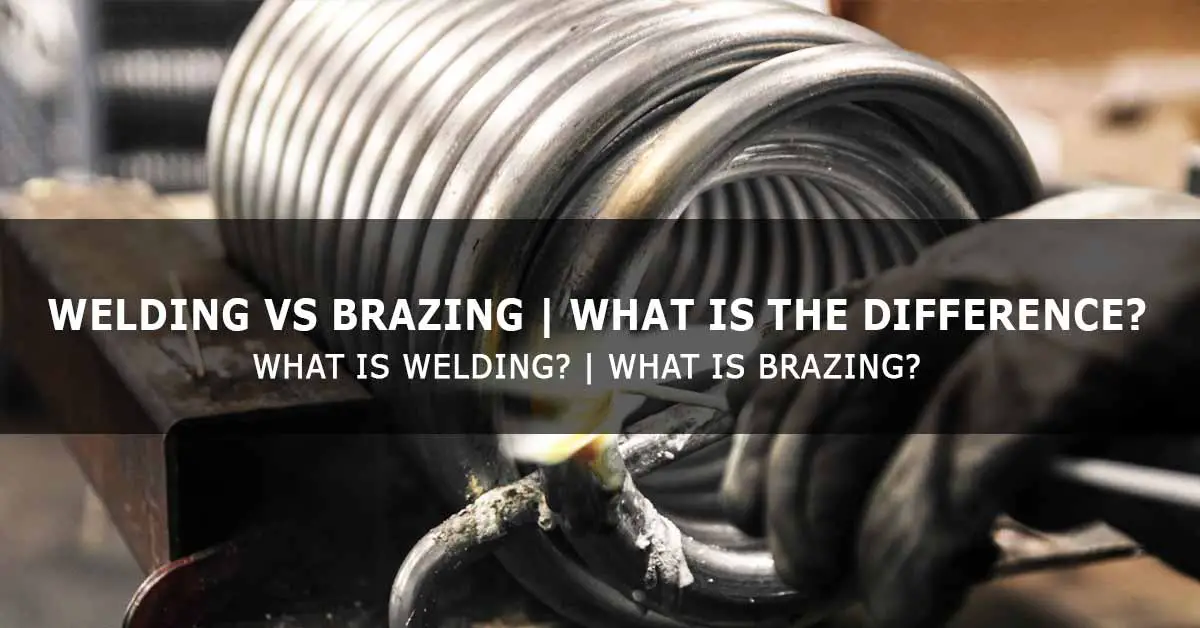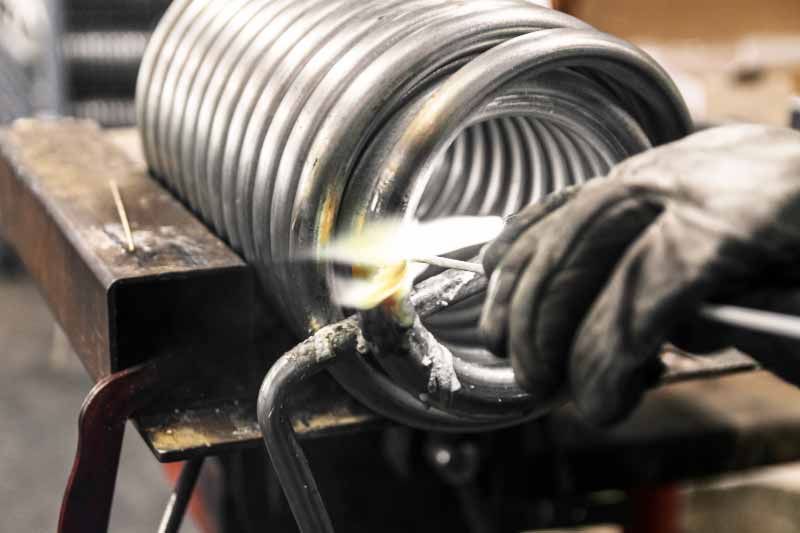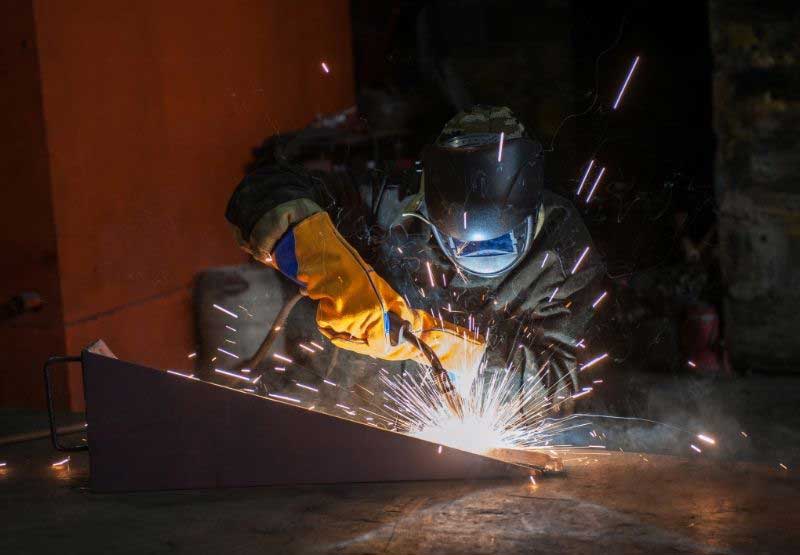Both welding and brazing are formidable metal joining techniques. Most inexperienced people mistakenly use these terms interchangeably. But there is a massive and comprehensive difference between these two techniques.
Welding is a process that joins two metal pieces together, usually by applying intense heat. If you look around, you will start noticing metal pieces all over that have been welded together. But what most of you forget is that there is more than one way of bonding two pieces of metal with each other – aka, welding techniques.
Today we talk about those differences, Welding VS Brazing, everything that you need to know.
What is Welding?
Welding is a process that involves joining two or more metal pieces together using intense heat, pressure, or both. The joining parts are melted together and fused as they cool down. Welding is most often used for joining metal and thermoplastics together, but you can also see it used on wood. The welding process also involves using filler metal, which is an extra piece of metal used to fill in or seal any potential gaps.
The welding process creates a very strong bond so durable that it can withstand various types of stresses. That is why it is used to build support structures for cars or planes.
When welding, the joining pieces that are welded together have to be similar since you can’t weld together some drastically different pieces of metal (like steel with copper). The welding temperature must be really high but, at the same time, not too high. Very high temperatures can warp and completely change the characteristics of the metal that a welder is trying to fuse together.
The most common welding techniques utilized today include:
- Gas Metal Arc Welding (GMAW), also known as MIG welding
- Gas Tungsten Arc Welding (GTAW), also known as TIG welding.
- Shielded Metal Arc Welding (SMAW), also known as stick welding or flux shielded arc welding.
- Flux-Cored Arc Welding (FCAW)
What is Brazing?
Brazing is a process that involves melting a filler metal into a joint in order to create a bond between the two joining metals. Brazing requires a small joint spacing for the filler metal to be added into the joint in a capillary action. In order to join the parts together, a proper phase temperature of 840°F (450°C) or above is required.
Brazing requires flux to improve the mechanical properties of the bond and also make it stronger. Flux used in brazing has the function to:
- Remove any oxide that is formed due to heating up the joining parts.
- Helping the capillary action by pulling the molten alloy into a joint.
- Promotes wetting.
Flux and filler metal combinations are very commonly used. Too much flux may result in creating a weak joint that may eventually leak or completely fail. One of the main advantages of brazing is that it can actually join dissimilar metals together, unlike welding. Materials like copper, gold, nickel, and silver can easily be joined together by brazing. However, the bond created with brazing is not as strong as it is with welding.
Welding VS Brazing
The main difference between brazing and welding is that brazing does not involve melting the workpieces together. Also, the heat source is what differentiates the two processes apart from each other. Brazing is applied using a torch, induction, furnace, or dipped at a temperature above 840°F (450°C). On the other hand, welding uses electricity as a heat source, with temperatures going somewhere around 10,000°F.
Even though novice welders tend to confuse the two and use the terms interchangeably, experienced welders know better. Here are the main differences between the two:
- When it comes to brazing, the filler metal has a lower melting point than the adjoining metal. However, the situation is the opposite with welding, as filler metal has a higher melting point.
- Brazing uses capillary action as opposed to fusion used in welding.
- In brazing, a welder is not going to melt the base metal. In welding, welders are going to melt both the base metal and the workpiece to join them together.
How does brazing work?
Brazing does not melt the base metal, meaning that the brazing temperature is lower than the melting point of the base metal. Brazing works by forming a metallurgical bond between the filler metal and the surfaces of the base metals that are joined together.
Heat is applied broadly to the base metal. The filler metal is then brought into contact with the heated parts. The heat will instantly melt it in the base metal due to capillary action drawn through the joint.
Brazing is used in the automotive, construction, electrical, HVAC/R, aerospace industries, and more. This technique is used for some general purposes, like working on an air conditioning system of a car or doing some very sensitive work on satellite components or jewelry.
Advantages of brazing compared to welding
When compared to welding, brazing comes with a few advantages. The biggest one that makes a lot of fabricators choose brazing instead of welding is that it has the ability to join two different pieces of materials together. By using flux or flux-cored coated alloys, you will not have to melt the base metal to join them together.
You are going to be able to braze steel with copper as easily as joining steel to steel. It doesn’t even matter if the two joining materials don’t have the same melting point. Besides being easy to use, brazing also provides some aesthetically pleasing and smooth surfaces. This is very important for creating joints on consumer products where appearance is of the essence.
In brazing, the base metals are never melted, meaning that the base metals are going to retain their physical properties. The use of lower heat is going to minimize the danger of warping the metals. Finally, brazing is much easier to learn and pick up as opposed to welding. As the two processes are very different from each other, a novice will be able to pick up brazing much faster than learning how to weld.
How does welding work?
Welding works by melting and fusing the two pieces of metal together. In most cases, a filler metal is used as a part of the process. To fuse metals together, a welder is going to apply concentrated heat to the weld area. The heat must be high enough to melt both the base and the filler metal together. In order to do it properly, welding temperatures start at the point of the base metal.
Welding is suitable for joining large assemblies of relatively thick metal (0.5”/12.7mm) at a single point. It is most commonly used in construction, transportation, manufacturing, and repair industries. Since the bead of a welding joint comes out as irregular, it is usually not suitable for creating products that need cosmetic joints.
You will mainly be able to see welding applied in robotic assemblies, fabrication of bridges, pressure vessels, aircraft, building structures, pipelines, train tracks, etc.
Advantages of welding vs brazing
Welding represents a fast and economical way of making strong and permanent joints. Since welding utilizes intense, localized, and pinpointed heat, it is not practical for uniform purposes. But it does have its usage, particularly when you want to join two strips of metal fast and in a single point.
The only problem with welding is creating linear rather than pinpointed welds, in which case the localized heat of welding can become a disadvantage. Also, immense heat requires more energy and more energy means more money spent. Not to mention that welding is not at all suitable for an automated production process.
But welding techniques are constantly improving. Since welding has been around for so long, welding techniques have been added throughout the years and have been built upon. Welding is still the best choice when working on specific, singular, and thick pieces. It has been able to find its niche in assembly configuration, shorter production runs, and simple day-to-day metal joining requirements.
Welding VS brazing final verdict
Both brazing and welding are equally valuable fabrication processes. Since most of the objects surrounding us have been made by some type of metal/material joining process, it boasts well to know how all of them work. Brazing and welding have their place in this world and can be used interchangeably but shouldn’t be mixed. These are totally different processes that have clear distinctions from each other.
If you are a new welder joining the trade, brazing is easy and fun to learn. Not to mention that it is pretty helpful to know. But welding is an older technique and should not be overlooked as no matter how old it gets, and it is still the basis of most of the world that surrounds us.
References:









